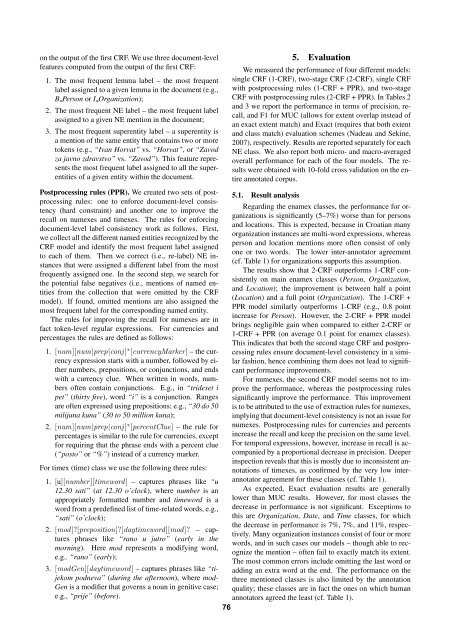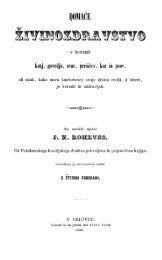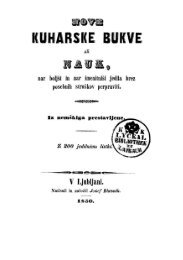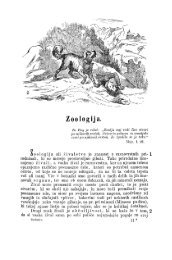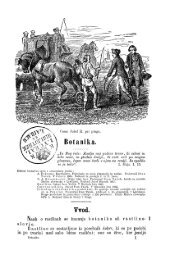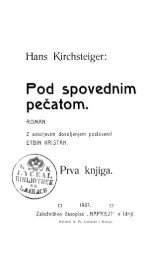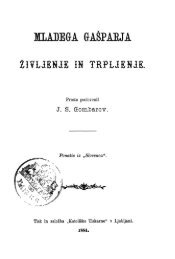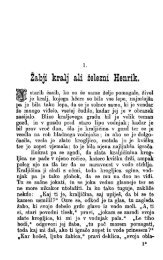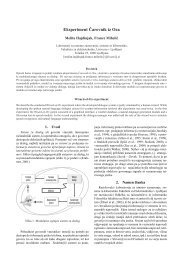Proceedings - Natural Language Server - IJS
Proceedings - Natural Language Server - IJS
Proceedings - Natural Language Server - IJS
You also want an ePaper? Increase the reach of your titles
YUMPU automatically turns print PDFs into web optimized ePapers that Google loves.
on the output of the first CRF. We use three document-level<br />
features computed from the output of the first CRF:<br />
1. The most frequent lemma label – the most frequent<br />
label assigned to a given lemma in the document (e.g.,<br />
B Person or I Organization);<br />
2. The most frequent NE label – the most frequent label<br />
assigned to a given NE mention in the document;<br />
3. The most frequent superentity label – a superentity is<br />
a mention of the same entity that contains two or more<br />
tokens (e.g., “Ivan Horvat” vs. “Horvat”, or “Zavod<br />
za javno zdravstvo” vs. “Zavod”). This feature represents<br />
the most frequent label assigned to all the superentities<br />
of a given entity within the document.<br />
Postprocessing rules (PPR). We created two sets of postprocessing<br />
rules: one to enforce document-level consistency<br />
(hard constraint) and another one to improve the<br />
recall on numexes and timexes. The rules for enforcing<br />
document-level label consistency work as follows. First,<br />
we collect all the different named entities recognized by the<br />
CRF model and identify the most frequent label assigned<br />
to each of them. Then we correct (i.e., re-label) NE instances<br />
that were assigned a different label from the most<br />
frequently assigned one. In the second step, we search for<br />
the potential false negatives (i.e., mentions of named entities<br />
from the collection that were omitted by the CRF<br />
model). If found, omitted mentions are also assigned the<br />
most frequent label for the corresponding named entity.<br />
The rules for improving the recall for numexes are in<br />
fact token-level regular expressions. For currencies and<br />
percentages the rules are defined as follows:<br />
1. [num][num|prep|conj ] ∗ [currencyMarker] – the currency<br />
expression starts with a number, followed by either<br />
numbers, prepositions, or conjunctions, and ends<br />
with a currency clue. When written in words, numbers<br />
often contain conjunctions. E.g., in “trideset i<br />
pet” (thirty five), word “i” is a conjunction. Ranges<br />
are often expressed using prepositions; e.g., “30 do 50<br />
milijuna kuna” (30 to 50 million kuna);<br />
2. [num][num|prep|conj ] ∗ [percentClue] – the rule for<br />
percentages is similar to the rule for currencies, except<br />
for requiring that the phrase ends with a percent clue<br />
(“posto” or “%”) instead of a currency marker.<br />
For timex (time) class we use the following three rules:<br />
1. [u][number][timeword] – captures phrases like “u<br />
12.30 sati” (at 12.30 o’clock), where number is an<br />
appropriately formatted number and timeword is a<br />
word from a predefined list of time-related words, e.g.,<br />
“sati” (o’clock);<br />
2. [mod]?[preposition]?[daytimeword][mod]? – captures<br />
phrases like “rano u jutro” (early in the<br />
morning). Here mod represents a modifying word,<br />
e.g.. “rano” (early);<br />
3. [modGen][daytimeword] – captures phrases like “tijekom<br />
podneva” (during the afternoon), where mod-<br />
Gen is a modifier that governs a noun in genitive case;<br />
e.g., “prije” (before).<br />
5. Evaluation<br />
We measured the performance of four different models:<br />
single CRF (1-CRF), two-stage CRF (2-CRF), single CRF<br />
with postprocessing rules (1-CRF + PPR), and two-stage<br />
CRF with postprocessing rules (2-CRF + PPR). In Tables 2<br />
and 3 we report the performance in terms of precision, recall,<br />
and F1 for MUC (allows for extent overlap instead of<br />
an exact extent match) and Exact (requires that both extent<br />
and class match) evaluation schemes (Nadeau and Sekine,<br />
2007), respectively. Results are reported separately for each<br />
NE class. We also report both micro- and macro-averaged<br />
overall performance for each of the four models. The results<br />
were obtained with 10-fold cross validation on the entire<br />
annotated corpus.<br />
5.1. Result analysis<br />
Regarding the enamex classes, the performance for organizations<br />
is significantly (5–7%) worse than for persons<br />
and locations. This is expected, because in Croatian many<br />
organization instances are multi-word expressions, whereas<br />
person and location mentions more often consist of only<br />
one or two words. The lower inter-annotator agreement<br />
(cf. Table 1) for organizations supports this assumption.<br />
The results show that 2-CRF outperforms 1-CRF consistently<br />
on main enamex classes (Person, Organization,<br />
and Location); the improvement is between half a point<br />
(Location) and a full point (Organization). The 1-CRF +<br />
PPR model similarly outperforms 1-CRF (e.g., 0.8 point<br />
increase for Person). However, the 2-CRF + PPR model<br />
brings negligible gain when compared to either 2-CRF or<br />
1-CRF + PPR (on average 0.1 point for enamex classes).<br />
This indicates that both the second stage CRF and postprocessing<br />
rules ensure document-level consistency in a similar<br />
fashion, hence combining them does not lead to significant<br />
performance improvements.<br />
For numexes, the second CRF model seems not to improve<br />
the performance, whereas the postprocessing rules<br />
significantly improve the performance. This improvement<br />
is to be attributed to the use of extraction rules for numexes,<br />
implying that document-level consistency is not an issue for<br />
numexes. Postprocessing rules for currencies and percents<br />
increase the recall and keep the precision on the same level.<br />
For temporal expressions, however, increase in recall is accompanied<br />
by a proportional decrease in precision. Deeper<br />
inspection reveals that this is mostly due to inconsistent annotations<br />
of timexes, as confirmed by the very low interannotator<br />
agreement for these classes (cf. Table 1).<br />
As expected, Exact evaluation results are generally<br />
lower than MUC results. However, for most classes the<br />
decrease in performance is not significant. Exceptions to<br />
this are Organization, Date, and Time classes, for which<br />
the decrease in performance is 7%, 7%, and 11%, respectively.<br />
Many organization instances consist of four or more<br />
words, and in such cases our models – though able to recognize<br />
the mention – often fail to exactly match its extent.<br />
The most common errors include omitting the last word or<br />
adding an extra word at the end. The performance on the<br />
three mentioned classes is also limited by the annotation<br />
quality; these classes are in fact the ones on which human<br />
annotators agreed the least (cf. Table 1).<br />
76


